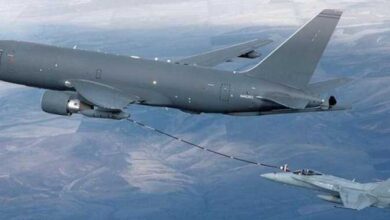
The United States switches on an US$800 million missile shield in Romania on Thursday, a step it sees as vital to defend itself and Europe from so-called rogue states, but the Kremlin says is aimed at blunting its own nuclear arsenal.
At the remote Deveselu air base in Romania, senior U.S. and NATO officials will declare operational the ballistic missile defense site, which is capable of shooting down rockets from countries such as Iran that Washington says could one day reach major European cities.
"Iran continues to develop, test and deploy a full range of ballistic missile capabilities and those capabilities are increasing in range and accuracy," said Frank Rose, deputy U.S. assistant secretary of state for arms control.
"Iran's systems can reach into parts of Europe, including Romania," Rose said, before heading to the site to join U.S. Deputy Defence Secretary Robert Work and NATO Secretary-General Jens Stoltenberg for a ribbon-cutting ceremony.
When complete, the defensive umbrella will stretch from Greenland to the Azores. On Friday, the United States will break ground on a final site in Poland that should be ready by the end of 2018, completing the shield first proposed almost a decade ago and that also includes ships and radars across Europe.
It will be handed over to NATO control in July.
Russia is incensed at such of show of force by its Cold War rival in formerly communist-ruled eastern Europe. Moscow says the U.S.-led alliance is trying to encircle it close to the strategically important Black Sea, home to a Russian naval fleet and where NATO is also considering increasing patrols.
"It is part of the military and political containment of Russia," Andrey Kelin, a senior Russian Foreign Ministry official, said on Thursday, the Interfax news agency reported.
"These decisions by NATO can only exacerbate an already difficult situation," he added, saying the move would hinder efforts to repair ties between Russia and the alliance.
The readying of the shield also comes as NATO prepares a new deterrent in Poland and the Baltics, following Russia's 2014 annexation of Crimea. In response, Russia is reinforcing its western and southern flanks with three new divisions.
The Kremlin says the shield's aim is to neutralize Moscow's nuclear arsenal long enough for the United States to strike Russia in the event of war. Washington denies that.
"We are not meddling in anything that could be perceived as potentially destabilizing," said Douglas Lute, the United States' envoy to NATO.
However, Lute said NATO would press ahead with NATO's biggest modernization since the Cold War. "We are deploying at sea, on the ground and in the air across the eastern flanks of the alliance … to deter any aggressor," he said.
Russian warheads
At a cost of billions of dollars, the missile defense umbrella relies on radars to detect a ballistic missile launch into space. Sensors then measure the rocket's trajectory and destroy it in space before it re-enters the earth's atmosphere. The interceptors can be fired from ships or ground sites.
While U.S. and NATO officials are adamant that the shield is designed to counter threats from the Middle East and not Russia, they remained vague on whether the radars and interceptors could be reconfigured to defend against Russia in a conflict.
The United States says Russia has ballistic missiles, in breach of a treaty that agreed the two powers must not develop and deploy missiles with a range of 500 km to 5,500 km. The United States declared Russia in non-compliance of the treaty in July 2014.
The issue remains sensitive because the United States does not want to give the impression it would be able to shoot down Russian ballistic missiles that were carrying nuclear warheads, which is what Russia fears.



